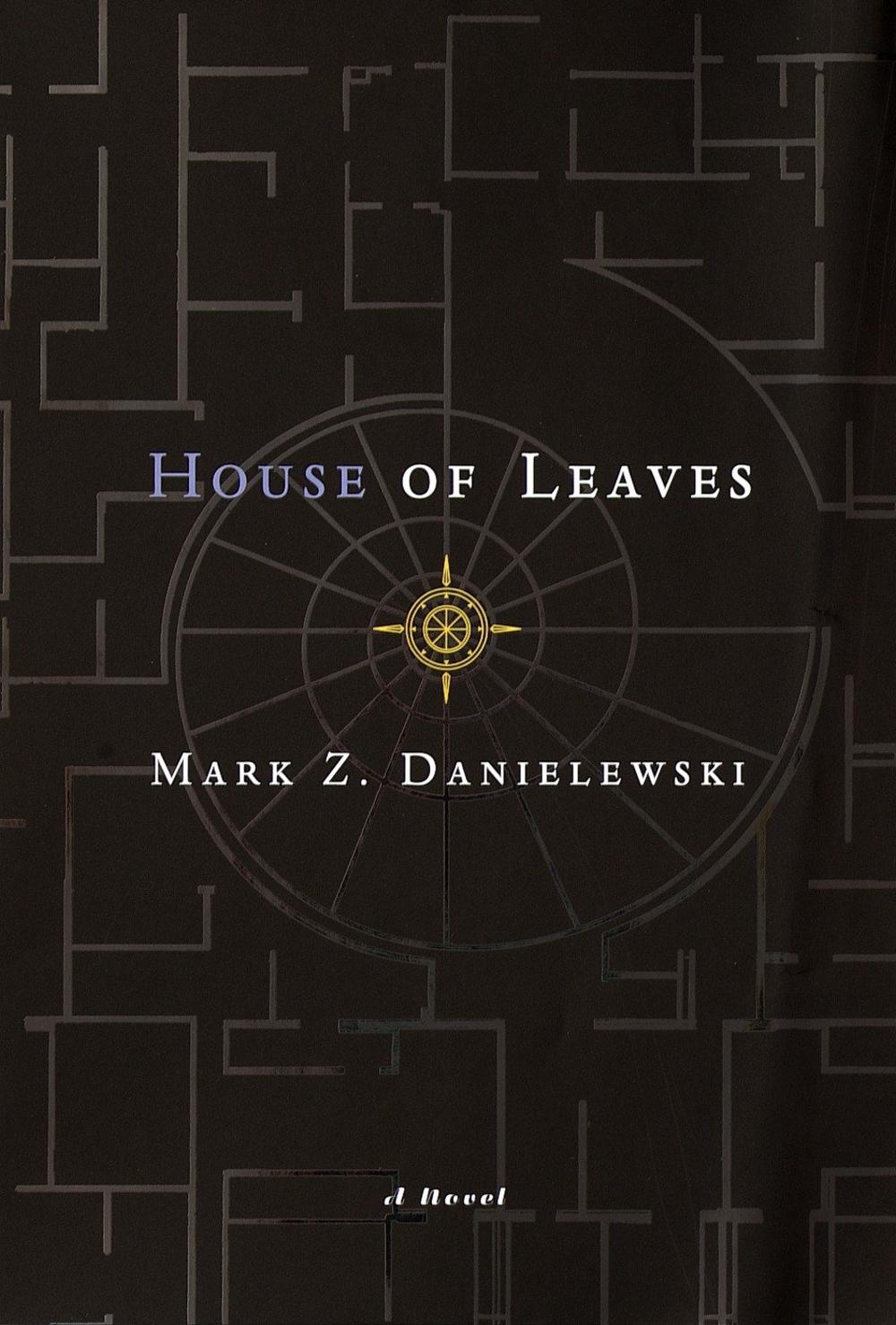Table Of Content
- Minor characters
- Rated “R” ‘The Little Mermaid’ Horror Movie Coming Soon; Watch the Trailer
- The Navidson Record
- Books
- Mark Z. Danielewski's script for a House Of Leaves TV pilot is just as bewildering and fascinating as the book
- After 21 years, Mark Z. Danielewski's debut novel remains a perplexing experience unlike any other

So, for me, House of Leaves’ dissection of The Navidson Record didn’t just feel familiar, it was inspiring. Zampanò constructs so many distinct angles, interpretations, insights, and points of view that reading them after 20 years writing about film professionally, I couldn’t help but yearn for a time when people wrote about the text of a film itself, not what would be coming next. As a novel, House of Leaves is even more complicated and awesome than its narrative threads. Danielewski uses the medium of print like a film director, visually manipulating the reader. Margins become the author’s frame as some pages have every single inch filled all the way to the edges while other pages bear only a single word or sentence with the rest blank.
Minor characters
House of Leaves refers to Poe and her songs several times, not only limited to her album Haunted, but Hello as well. One example occurs when the character Karen Green is interviewing various academics on their interpretations of the short film "Exploration #4"; she consults a "Poet," but there is a space between the "Poe" and the "t," suggesting that Poe at one point commented on the book. Though Truant attributes Zampanò as the author of The Navidson Record, Truant offers few concrete details about Zampanò's character or past, citing only information learned from his former acquaintances. These include neighbors and various students and social workers, exclusively female, who volunteered as readers for Zampanò's research. Unable to even determine Zampanò's full name, Truant only confirms that Zampanò became blind some time during the 1950s, and was approximately eighty years old at the time of his death. Truant also learns that Zampanò was erratic and capricious in his lifestyle and writing habits, diagnosing him with graphomania.
Rated “R” ‘The Little Mermaid’ Horror Movie Coming Soon; Watch the Trailer
Before movie theaters were forced to shut down due to the coronavirus pandemic, one of the best movies of the year so far was Blumhouse's new take on The Invisible Man. However, it looks like they'll be going from a high peak to a disappointing valley later this month with the surprise announcement of their latest film premiering on VOD. While this may seem like a chore, to those who are willing to put in the effort, they are presented with a rich mystery that forces readers to dig deep to interpret it. It took me a little under two years to finish the book, but as I stuck with it, I found myself being sucked into its terrifying world more than I had with any other book. The word "house" appears in blue ink every time it appears (including on the cover), and different narrators are denoted by different fonts – Courier New for Johnny, Times New Roman for Zampanò.
The Navidson Record
We first follow Johnny Truant, a tattoo artist who discovers an unpublished manuscript while cleaning out the apartment of his recently-passed neighbor, Zampanò. Turns out, the deceased old man wrote a long-form analysis of the Navidson Record, a documentary following a photojournalist’s surreal exploration of a home that’s bigger inside than it is outside. As in, there are rooms which aren’t part of the floor plan, and certain hallways go on seemingly forever. It’s been sold as an existential horror story, but he’d prefer it be labeled a love story. Not only does its plot intrigue readers with unsettling riddles, the book also challenges them to scrutinize the very experience of reading. Even videogames would end up “stealing” from the novel, with fully manipulatable 3D environments being ideal for the depiction of architectural horrors.
Unfilmable Books We Want To See Adapted After Dune - MovieWeb
Unfilmable Books We Want To See Adapted After Dune.
Posted: Tue, 15 Aug 2023 07:00:00 GMT [source]
Books
“House of Leaves” by Mark Z. Danielewski is a labyrinthine and unconventional narrative that defies traditional storytelling. The novel is presented as a found manuscript, an academic exploration, and a deeply personal account, all intertwined within its complex structure. It reminds us of when Stephen King began releasing sections of a new novel, The Plant, as an e-book back in 2000.
Meanwhile, Karen followed Navidson, finding the house now normal and the hallway gone. She resumed living in the house, becoming confident that Navidson can still be found within. She found Navidson emaciated and maimed by frostbite and injury, but they materialized together safely outside the house.
An appendix provided by the editors includes a miscellany of writings from both Zampanò and Truant excluded from the body of the book, an obituary for Truant's birth father, and a series of letters later compiled in the Whalestoe Letters. In support, Zampanò cites or quotes articles, journals, symposia, books, magazines, TV programs, and interviews, many supposedly dedicated to this film. Though many of the academic works Zampanò cites appear to analyze the Record purely as a work of horror fiction, Zampanò's writing remains adamant as to its authenticity. Rather than Danielewski, the title page of House of Leaves credits two men named Zampanò and Johnny Truant as its authors. In an introduction dated 1998, Truant claims to have found the book as an unfinished manuscript left by the recently deceased Zampanò, having never met the author in life. Truant, an apprentice at a Los Angeles tattoo parlor, decided to complete and submit the work for posthumous publication.
After 21 years, Mark Z. Danielewski's debut novel remains a perplexing experience unlike any other

Many view the book as unadaptable because of its epistolary and meta-narrative, though speculations about a film have been going around on social media and beyond for years. There really isn’t anything formally in the works, so it’s impossible to say. That said, Mark Danielewski has said that he’s written a number of screenplays for a potential series adaptation and released a pilot for a potential series as well (though it’s not optioned, which means there’s no production company that owns the rights to it). The book was followed by a companion piece called The Whalestoe Letters, a series of letters written to the character Johnny Truant by his mother while she was confined in a mental institution. In conclusion, “House of Leaves” is a literary maze that challenges and captivates readers in equal measure.

The Minotaur, the labyrinth, and the shifting dimensions all contribute to a rich tapestry of symbols that invite readers to delve into the layers of meaning within the narrative. The characters in “House of Leaves” are not mere conduits for the plot; they are intricately woven into the fabric of the novel, contributing to its eerie atmosphere and psychological depth. But as you dive deeper into his story and learn about his mentally ill mother, the full picture comes together. Although it took time, I began to feel for Johnny and his dysfunction, hoping he would get out of the hole he keeps digging for himself.
Known only as The Navidson Record, this documentary supposedly follows filmmaker David Navidson and his family as they discover that their suburban home is somehow larger on the inside, with rooms and hallways slowly expanding into infinity. Meanwhile, the book also contains a novella’s worth of letters and other random documents, some of which tell the story of Johnny’s mother as she endures incarceration in a mental hospital (The Whalestoe Letters), as well as frequent interjections by confused editors. For readers who enjoy unconventional narratives, experimental writing styles, and psychological horror, “House of Leaves” is undoubtedly worth exploring. It offers a unique reading experience that pushes the boundaries of traditional storytelling.
A Los Angeles tattoo parlor worker (Johnny Truant) finds a trunk full of pages written by his friend’s blind neighbor (Zampanò), now deceased. Johnny decides to put the pages in order and finds an overly in-depth analysis of a film called The Navidson Record about one family’s very unusual house. However, Johnny quickly realizes The Navidson Record is not an actual movie.
The house serves as a metaphor for the subconscious mind, and the novel challenges readers to question reality and the boundaries between fiction and truth. It’s a small, “real life” documentary described as being financially successful and, subsequently, creating a whole subculture of debate and scrutiny over its validity. Zampanò’s manuscript is a summation of all that cultural conversation, so he draws upon all manner of academic research, documentaries, interviews, and more to not just recap The Navidson Record, but to analyze it to its bones. These hundreds and hundreds of specific records cite mostly non-existent works, just like The Navidson Record itself.
Sometimes, huge pieces of information are simply not there, either with literal missing text or an incomplete footnote, which are either credited to Johnny not being able to find Zampanò’s work or Zampanò himself redacting it. All these mysterious gaps and concentrated stories add new layers to the experience of reading House of Leaves, more than a typical novel. House of Leaves’ digital origins and epistolary structure would also go on to influence the rise of original internet horror content, all the way from Ted the Caver to the Dionaea House. These primitive online legends would blend fiction and reality in order to terrify readers, eventually leading to the creation of shareable “creepypastas” like Cameraheads, The SCP Foundation and even the infamous Slender Man. This last one was so influenced by Danielewski’s imagination that you’ll find numerous references to House of Leaves in nearly all of the YouTube ARGs that popularized the faceless character (which is how I first encountered the book). The first novel by American author Mark Z. Danielewski, House of Leaves (2000) unfolds like a story within a story, centering around a documentary film about a family that discovers that their new house is bigger on the inside.
House of Leaves was accompanied by a companion piece (or vice versa), a full-length album called Haunted recorded by Danielewski's sister, Anne Danielewski, known professionally as Poe. The two works cross-pollinated heavily over the course of their creations, each inspiring the other in various ways. Poe's statement on the connection between the two works is that they are parallax views of the same story.
The 224-page hardcover tome also includes an introduction by Curtis — who details the challenges of translating a script into a novel and explains the reasoning behind his decisions to occasionally subvert the source material — and a brief afterword from Arocena. And with liminal scares and sensorial Found Footage on the rise, I thought that this might be a good time to dive into how this 2000 novel redefined modern horror. The fun part of this infinite cycle of influences comes when we try to identify pivotal moments in culture that appear to have been “stolen” from repeatedly. And when it comes to the horror genre, there is one specific work of literature that had a hand in everything from the rise of Found Footage to the success of recent horror phenomena like the Backrooms creepypasta and even Kyle Edward Ball’s Skinamarink. Naturally, I’m referring to Mark Z. Danielewski’s House of Leaves, an experimental novel that you’re probably already familiar with even if you’ve never heard of it.

No comments:
Post a Comment